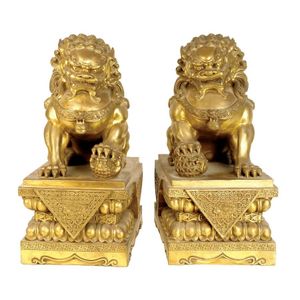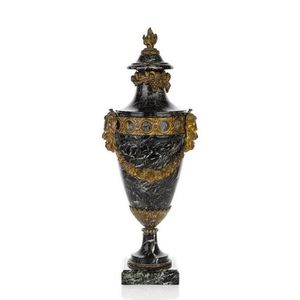French Ormolu and Bronze Figural Annular Clock
You must be a subscriber, and be logged in to view price and dealer details.
Subscribe Now to view actual auction price for this item
When you subscribe, you have the option of setting the currency in which to display prices to $Au, $US, $NZ or Stg.
- Circa - A Latin term meaning 'about', often used in the antique trade to give an approximate date for the piece, usually considered to be five years on either side of the circa year. Thus, circa 1900 means the piece was made about 1900, probably between 1895 and 1905. The expression is sometimes abbreviated to c.1900.
- Bronze - An alloy of copper and tin, traditionally in the proportions of about 9 parts of copper to 1 part of tin.
The discovery of bronze in Western Asia in the 4th century enabled people to create metal objects which were superior to those previoulsy possible because of its strength and hardness, and it has been used throughout the world for weapons, coins, tools, statuary and other decorative items.
It is very fluid in a molten state, and its hardness, strength when set, and non-corrosive properties makes it most suitable for casting sculpture. - Ormolu - Ormolu was popular with French craftsmen in the 18th and 19th century for ornamental fittings for furniture, clocks and other decorative items. True ormolu is gilt bronze, that is bronze that has been coated with gold using a mercury amalgam. Due to the health risks associated with using mercury, this method of creating ormolu was discontinued in France in the 1830s. A substitute was developed consisting of about 75% copper and 25% zinc, however it was inferior to the bronze version. It was often lacquered to prevent it tarnishing.
This item has been included into following indexes:
Visually similar items

Antique 19th century monumental Sevres urn, baluster form, cobalt-blue ground centred with chased gilt surrounding a cartouche painted by A. Lheri, deep blue ground, painted with oval reserves showing allegorical figure and winged cupid, the reverse wooded

A pair of Chinese brass temple lion dogs, both raised on plinth bases, the female with fore paw raised on a pup, the male with paw raised on a brocade ball. Height 45 cm

A large Sevres pattern porcelain battle scene vase with bronze mounts, French, circa 1900, 88 cm high

French gilt-bronze mounted verde Antico cassolette, 19th century, with flame finial, body decorated with two Dionysian masks united by swags of vine, (A/F) minor repairs to marble. Height 54 cm
